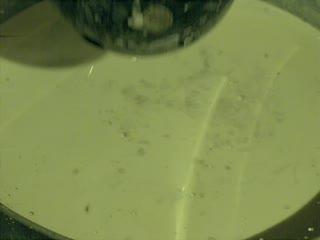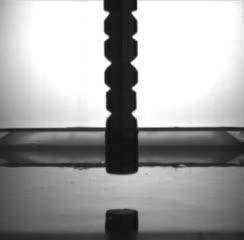Hurricane Fabio continues to be the big tropical news maker in the Eastern Pacific, while the Central Pacific Hurricane Center is tracking the remnants of Hurricane Emilia. Both storms were captured on one satellite image from NOAA's GOES-15 satellite on July 16.
Heavens
Recent excavations, sediment coring and mapping by a multi-university team led by the University of Cincinnati at the pre-Columbian city of Tikal, a paramount urban center of the ancient Maya, have identified new landscaping and engineering feats, including the largest ancient dam built by the Maya of Central America.
That dam – constructed from cut stone, rubble and earth – stretched more than 260 feet in length, stood about 33 feet high and held about 20 million gallons of water in a man-made reservoir.
COLUMBIA, Mo. — A team of University of Missouri researchers has found that introducing a missing gene into the central nervous system could help extend the lives of patients with Spinal Muscular Atrophy (SMA) – the leading genetic cause of infantile death in the world.
SMA is a rare genetic disease that is inherited by one in 6,000 children who often die young because there is no cure. Children who inherit SMA are missing a gene that produces a protein which directs nerves in the spine to give commands to muscles.
Diagnosis is key to the control and prevention of endemic livestock diseases in developing regions. New research has found the use of a low-cost diagnostic decision support tool could lead to the improvement in clinical practice by veterinary and animal health officers in sub-Saharan Africa.

Cornstarch and water is a smart material derived from simple components. This video shows a bowling ball bouncing off the surface of the mixture, which also can catch a dropped egg without breaking it.
(Photo Credit: Heinrich Jaeger/University of Chicago)

Washington, DC —Scientists have long believed that comets and, or a type of very primitive meteorite called carbonaceous chondrites were the sources of early Earth's volatile elements—which include hydrogen, nitrogen, and carbon—and possibly organic material, too. Understanding where these volatiles came from is crucial for determining the origins of both water and life on the planet.
Massive explosions on the sun unleash radiation that could kill astronauts in space.
Now, researchers from the U.S. and South Korea have developed a warning system capable of forecasting the radiation from these violent solar storms nearly three hours (166 minutes) in advance, giving astronauts, as well as air crews flying over Earth's polar regions, time to take protective action.
Daniel is no longer a tropical storm, and has weakened to a remnant low pressure system, but its circulation is still visible on satellite imagery today, July 12 as it moves south of Hawaii.
A visible image from NOAA's GOES-15 satellite on July 12, 2012 shows the circulation of Daniel's remnants heading toward Hawaii, followed by Hurricane Emilia to the east, and further east is Tropical Storm Fabio. Daniel's remnants appear as a ghost-like swirl of clouds in comparison to the organized and bright white clouds in powerful Hurricane Emilia.
NASA research has indicated whenever "Hot Towering" thunderstorms are spotted within a tropical cyclone, it is more likely to strengthen. NASA's TRMM satellite saw hot towers within newborn Tropical Depression 06E when it passed overhead early on July 12 and it later became Tropical Storm Fabio.
NASA's Aqua satellite has several instruments onboard that are providing forecasters with different views of Hurricane Emilia in the Eastern Pacific Ocean. The infrared view hinted that Emilia would strengthen and it regained Category 3 Hurricane status today.
Theoretical physicist Filippo Miatto and colleagues from the University of Strathclyde, Glasgow, UK, have found a new method of reliably assessing the information contained in photon pairs used for applications in cryptography and quantum computing. The findings, published in EPJ D¹, are so robust that they enable access to the information even when the measurements on photon pairs are imperfect.
PASADENA, Calif.—Each century, about two massive stars in our own galaxy explode, producing magnificent supernovae. These stellar explosions send fundamental, uncharged particles called neutrinos streaming our way and generate ripples called gravitational waves in the fabric of space-time. Scientists are waiting for the neutrinos and gravitational waves from about 1000 supernovae that have already exploded at distant locations in the Milky Way to reach us.
Few synthetic materials are able to mimic the human body's ability to regulate itself—until now. In the July 12 issue of Nature, a team of engineers from the University of Pittsburgh and Harvard University has presented a strategy for building self-regulating microscopic materials, ultimately paving the way toward so-called smart buildings with more energy-saving features and smarter biomedical engineering applications.
In the name of science, but with aim of saving lives, preventing injuries and reducing property losses, members of the New York City Fire Department (FDNY) spent much of the first two weeks in July setting fire to 20 abandoned townhouses on Governors Island, about a kilometer from the southern tip of Manhattan.
Next-generation "smart" electrical meters for residential and commercial buildings will have computerized operating systems just as laptops or mobile devices do. On July 10, 2012, the National Institute of Standards and Technology (NIST) published its first-ever draft guidelines* to help utility companies test their procedures for upgrading meters securely from a remote location.